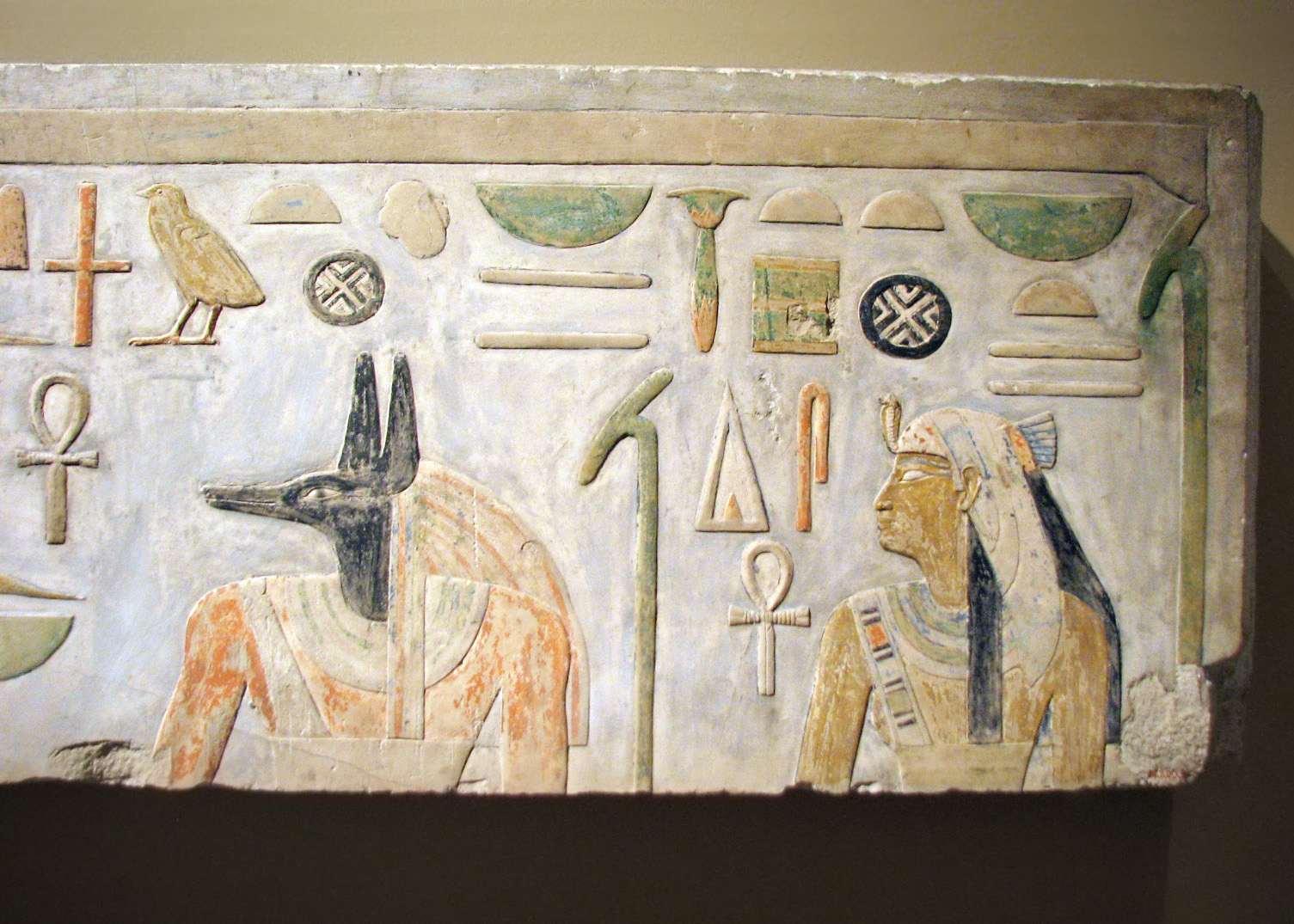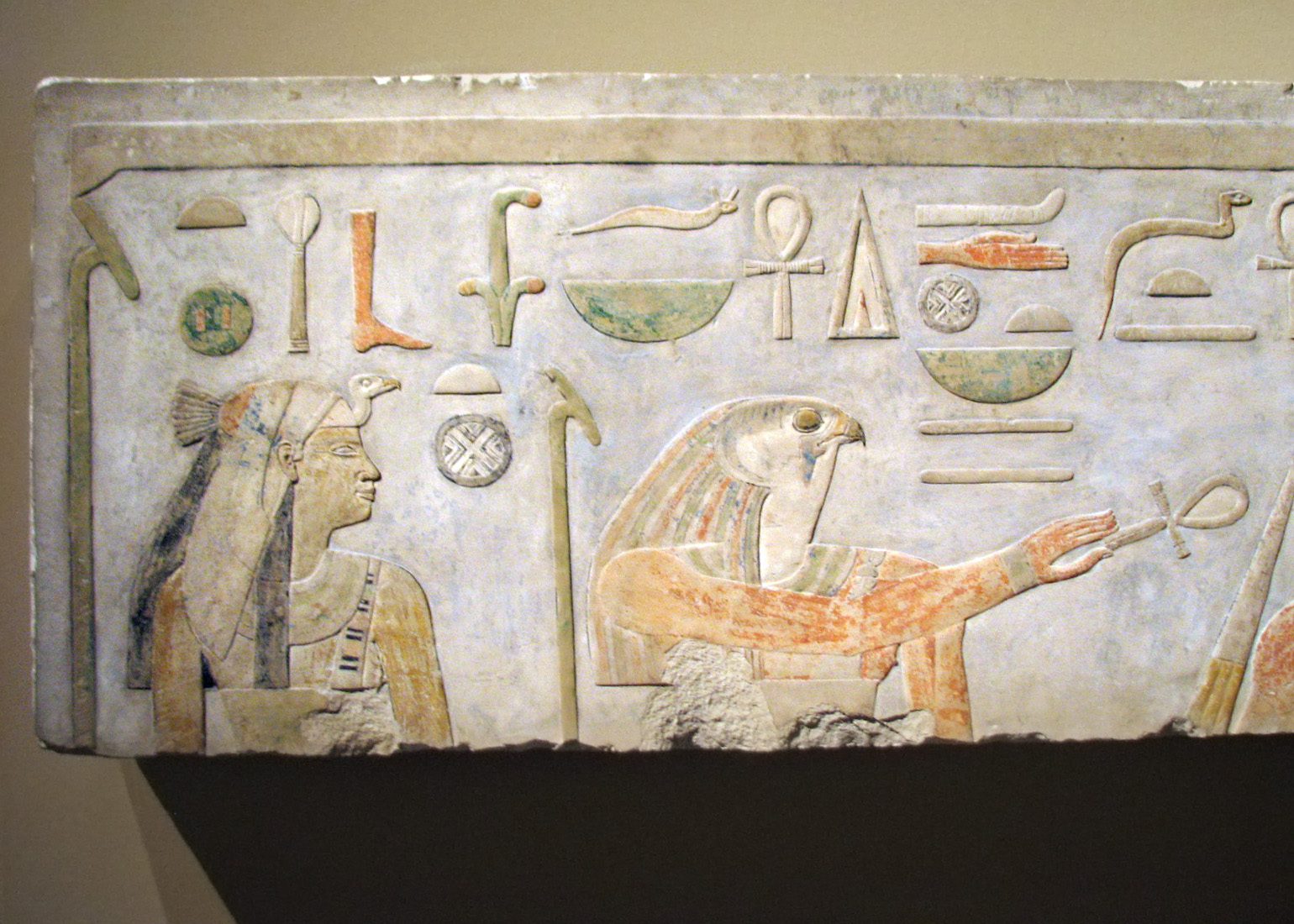
Reused Relief of Amenemhat I
Dynasty 12, ca. 1991-1962 BCE
Painted Limestone, From Lisht, North Pyramid, MMA
H. 14 1/2 in. (37 cm), W. 68 in. (173 cm), Rogers Fund, 1908 (08.200.5)

Reused Relief of Amenemhat I
Dynasty 12, ca. 1991-1962 BCE
Painted Limestone, From Lisht, North Pyramid, MMA
H. 14 1/2 in. (37 cm), W. 68 in. (173 cm), Rogers Fund, 1908 (08.200.5)
| (From info card) "The reliefs in this gallery were discovered in the foundations of the funerary temple of Amenemhat I at Lisht. Most of them bear his name, sometimes with that of his son and co-regent, Senwosret I. Because of their protected location many of the blocks are complete, and the colors are still fresh; several sculptural styles are represented. The site and buildings from which the blocks were taken have not been identified, but possibly they all derive from an earlier funerary temple at Lisht." (From museum website Above them all is the pet hieroglyph for 'sky'. Two Was-scepters hold up the sky. Amenemhat is receiving the blessings of the deities of Upper Egypt (Nekhbet, Anubis) and Lower Egypt (Wadjet, Horus). Usually, it is Set giving the Upper Egypt blessing, but here it is Anubis: "Seth and Anubis have complex and interrelated functions. Both deities have, from very early times, close associations with kingship. Apart from frequent statements in the Pyramid Texts that the king takes on the form of Anubis or Upwawet or more generally assumes the shape of a jackel, there the pharoah is clearly identified both with Horus and with Seth." (From "Seth and the Jackals", by Terence DuQuesne, in _Egyptian Religion_) |


Detail showing Nekhbet and Horus (note the vulture head in the uraeus position) ...

Amenemhat's cartouches... (Se-hotep-ab-Ra ="pleased is the heart of Ra")